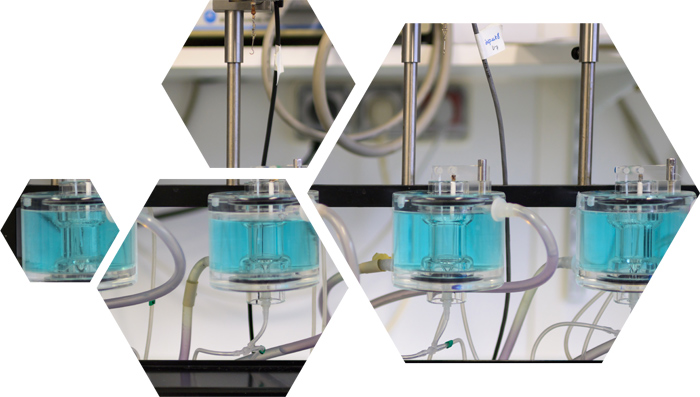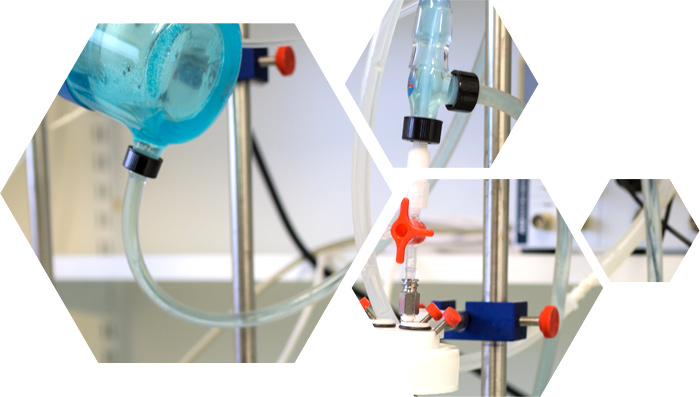
Ex vivo and in vitro assays for myocardial contractility and vascular reactivity evaluation
Our services range from whole organ to specific isolated cell assays and provide a physiologically relevant bridge between ex vivo / in vitro assays and in vivo efficacy studies. These experiments enable drug screening as well as pharmacological and toxicological studies. They can be performed before running in vivo model as initial proof of concept or after ex-vivo exploration to further characterize the models or dissect the mechanism by which your drug is acting.
Myograph vascular reactivity, endothelial function
We perform assays on isolated vessel segments to evaluate endothelial function and contractile properties.
The Organ bath / Wire myograph enables us to measure isometric tension in isolated arterial rings from rodents. Thanks to this system, we can assess the maximal contractile capacity, the integrity of the endothelium, the vascular muscle tone in relation to vasodilators or vasoconstrictors and the endothelium-dependent or -independent relaxation.
Assays are available in rats, hamsters and mice.

Langendorff perfused isolated heart
The perfused isolated heart model helps to screen the cardiovascular safety and efficacy of new drug candidates. The Langendorff heart is also a powerful model for evaluating not only the direct effects of compounds on cardiac function using a balloon inserted into the left ventricle, but also the cardio-protective effects during ischemia-reperfusion.
Moreover, this model can also be used to test the ability of some compounds to reverse the cardiotoxic effect of doxorubicin or other agents.
Assays available in rats, hamsters and mice.

IonOptix Calcium transients and contractility
The isolated cardiac myocyte is used to study calcium transients and contractility and can easily detect arrhythmogenesis as well as positive or negative inotropic effects of test compounds.
Thanks to the IonOptix system, we are able to monitor the extent and rate of myocyte shortening / relengthening, and intracellular calcium events during excitation–contraction coupling in response to electrical and / or chemical stimulation of cardiomyocytes freshly isolated from adult rat hearts.
CONTACT US FOR MORE INFORMATION


